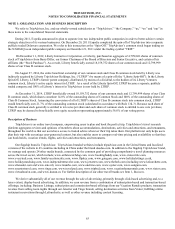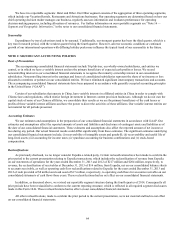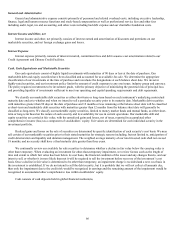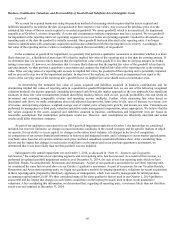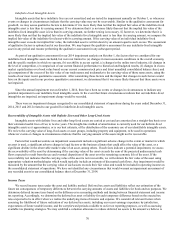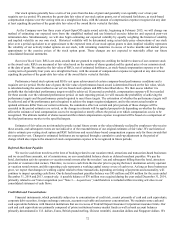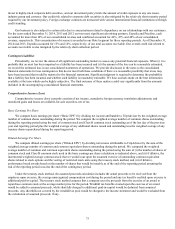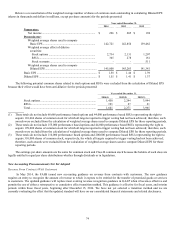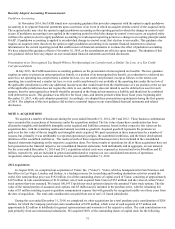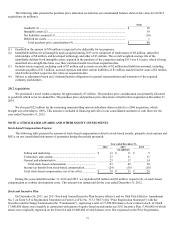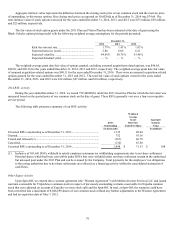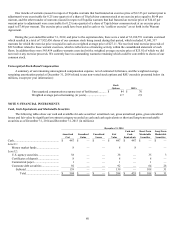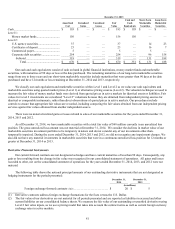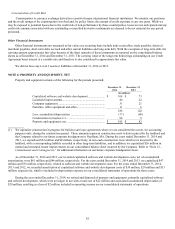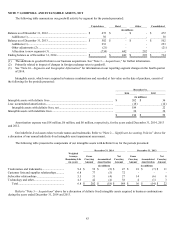TripAdvisor 2014 Annual Report Download - page 83
Download and view the complete annual report
Please find page 83 of the 2014 TripAdvisor annual report below. You can navigate through the pages in the report by either clicking on the pages listed below, or by using the keyword search tool below to find specific information within the annual report.73
invest in highly-rated corporate debt securities, and our investment policy limits the amount of credit exposure to any one issuer,
industry group and currency. Our credit risk related to corporate debt securities is also mitigated by the relatively short maturity period
required by our investment policy. Foreign exchange contracts are transacted with various international financial institutions with high
credit standing.
Our business is also subject to certain risks due to concentrations related to dependence on our relationships with our customers.
For the years ended December 31, 2014, 2013 and 2012 our two most significant advertising partners, Expedia and Priceline, each
accounted for more than 10% of our consolidated revenue and combined accounted for 46%, 47% and 48% of our consolidated
revenue, respectively. This concentration of revenue is recorded in our Hotel segment for these reporting periods. As of December 31,
2014 and 2013, Expedia accounted for 15% and 14%, respectively, of our total accounts receivable. Our overall credit risk related to
accounts receivable is also mitigated by the relatively short collection period.
Contingent Liabilities
Periodically, we review the status of all significant outstanding matters to assess any potential financial exposure. When (i) it is
probable that an asset has been impaired or a liability has been incurred and (ii) the amount of the loss can be reasonably estimated,
we record the estimated loss in our consolidated statements of operations. We provide disclosure in the notes to the consolidated
financial statements for loss contingencies that do not meet both these conditions if there is a reasonable possibility that a loss may
have been incurred that would be material to the financial statements. Significant judgment is required to determine the probability
that a liability has been incurred and whether such liability is reasonably estimable. We base accruals made on the best information
available at the time which can be highly subjective. The final outcome of these matters could vary significantly from the amounts
included in the accompanying consolidated financial statements.
Comprehensive Income (Loss)
Comprehensive income (loss) currently consists of net income, cumulative foreign currency translation adjustments, and
unrealized gains and losses on available-for-sale securities, net of tax.
Basic Earnings Per Share
We compute basic earnings per share (“Basic EPS”) by dividing net income attributable to TripAdvisor by the weighted average
number of common shares outstanding during the period. We compute the weighted average number of common shares outstanding
during the reporting period using the total of common stock and Class B common stock outstanding as of the last day of the previous
year end reporting period plus the weighted average of any additional shares issued and outstanding less the weighted average of any
treasury shares repurchased during the reporting period.
Diluted Earnings Per Share
We compute diluted earnings per share (“Diluted EPS”) by dividing net income attributable to TripAdvisor by the sum of the
weighted average number of common and common equivalent shares outstanding during the period. We computed the weighted
average number of common and common equivalent shares outstanding during the period using the sum of (i) the number of shares of
common stock and Class B common stock used in the basic earnings per share calculation as indicated above, and (ii) if dilutive, the
incremental weighted average common stock that we would issue upon the assumed exercise of outstanding common equivalent
shares related to stock options and the vesting of restricted stock units using the treasury stock method, and (iii) if dilutive,
performance based awards based on the number of shares that would be issuable as of the end of the reporting period assuming the
end of the reporting period was also the end of the contingency period.
Under the treasury stock method, the assumed proceeds calculation includes the actual proceeds to be received from the
employee upon exercise, the average unrecognized compensation cost during the period and any tax benefits credited upon exercise to
additional paid-in-capital. The treasury stock method assumes that a company uses the proceeds from the exercise of an award to
repurchase common stock at the average market price for the period. Windfall tax benefits created upon the exercise of an award
would be added to assumed proceeds, while shortfalls charged to additional paid-in-capital would be deducted from assumed
proceeds. Any shortfalls not covered by the windfall tax pool would be charged to the income statement and would be excluded from
the calculation of assumed proceeds, if any.


